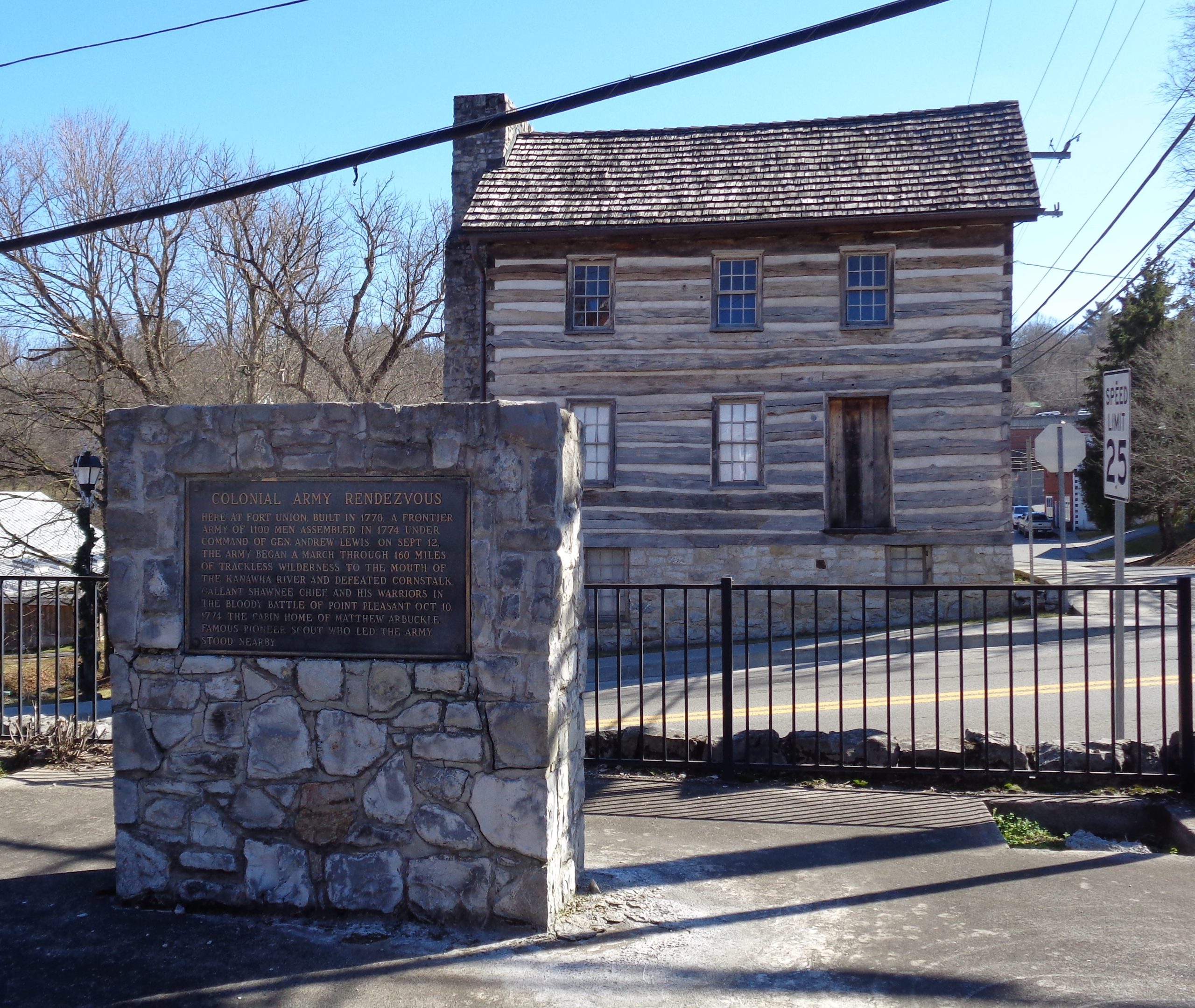
In two years, 2026, Americans will celebrate the 250th anniversary of the founding of our nation. In some ways, that founding had roots here in the Greenbrier Valley in August and September 1774, with the gathering of the militia forces under Col. Andrew Lewis at Camp Union – now Lewisburg.
The Greenbrier Historical Society and a host of partners have planned a commemorative event of Camp Union for Sept. 27, 28, and 29 in Lewisburg. All events are free to the public.
Camp Union weekend will consist of living history re-enactments on the grounds of the Greenbrier Historical Society’s Barracks and across from the Lewis Spring where the actual events took place; visits by all 8th grade students in Greenbrier County on Friday; open to the public on Saturday and on Sunday morning. Eighteenth century surveyors, fife and drum musicians, Native American interpreters, and militia reenactors will all bring this history to life. Space in Montwell Commons’ Clingman Center will be available for any indoor needs.
The GHS’s Barracks building will host a new traveling exhibit about Camp Union/Lord Dunmore’s War. The exhibit will later be loaned to libraries, schools, or other museums. The weekend will culminate in a keynote lecture by Alan Gutchess, Director of the Fort Pitt Museum, on Sunday, Sept. 29 at 2 p.m. at Lewisburg’s Carnegie Hall. This lecture will provide insights on the settler-Native American conflicts that led to Lord Dunmore’s War, and Native American perspectives. Following the lecture, attendees are invited to a reception at the North House Museum, where the Camp Union traveling exhibit will again be on view.
The fledgling union of American colonies did not have a professional army. However, the mustering of this militia, their march to Point Pleasant, their participation in battle, and the logistics required to support such a large force were excellent training opportunities for the frontiersmen.
Besides participating in Dunmore’s War, men at Camp Union became prominent military leaders during the Revolutionary War, such as Brig. Gen. Andrew Lewis, Brig. Gen. George Mathews, and Brig. Gen. William Russell. Some were also prominent political leaders afterward, including Governor Isaac Shelby of Kentucky, acting Governor William Fleming of Virginia, and Governor George Mathews of Georgia, among others.
And, by all accounts, these soldiers were formidable men.
Regarding the Virginia militiamen of this campaign, Col. William Preston, County Lieutenant of Fincastle County stated on Oct. 13, 1774,
“This body of militia being mostly armed with rifle guns, and a great part of them good woodsmen, are looked upon to be at least equal to any troops for the number that have been raised in America.”
This assessment was echoed by U.S. President Theodore Roosevelt, in his book, The Winning of the West, Volume I (p308).
“The backwoodsmen who were to form the army of Lewis had begun to gather at the Levels of Greenbriar before the 1st of September….it may be doubted if a braver or physically finer set of men were ever got together on this continent.”
During the Revolutionary War, George Washington is said to have responded to the revolutionary spirit of these counties: “Strip me of the dejected and suffering remnants of my army; take from me all that I have left; leave me but a banner; give me but the means to plant it upon the mountains of West Augusta, and I will yet draw around me the men who will lift up their bleeding country from the dust and set her free.”
Al Emch, President of the Greenbrier Historical Society, said, “The spirit of these men is unequalled. Imagine the difficult circumstances of their march to Point Pleasant and their worry for the families they left behind. No wonder George Washington applauded their courage.”
Emch went on to say, “We hope everyone will come out to see the reenactment of Camp Union, hear the lecture at Carnegie Hall and learn about the role the people of the Greenbrier Valley played in Dunmore’s War and the American Revolution.”


